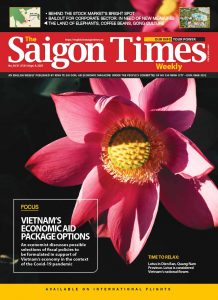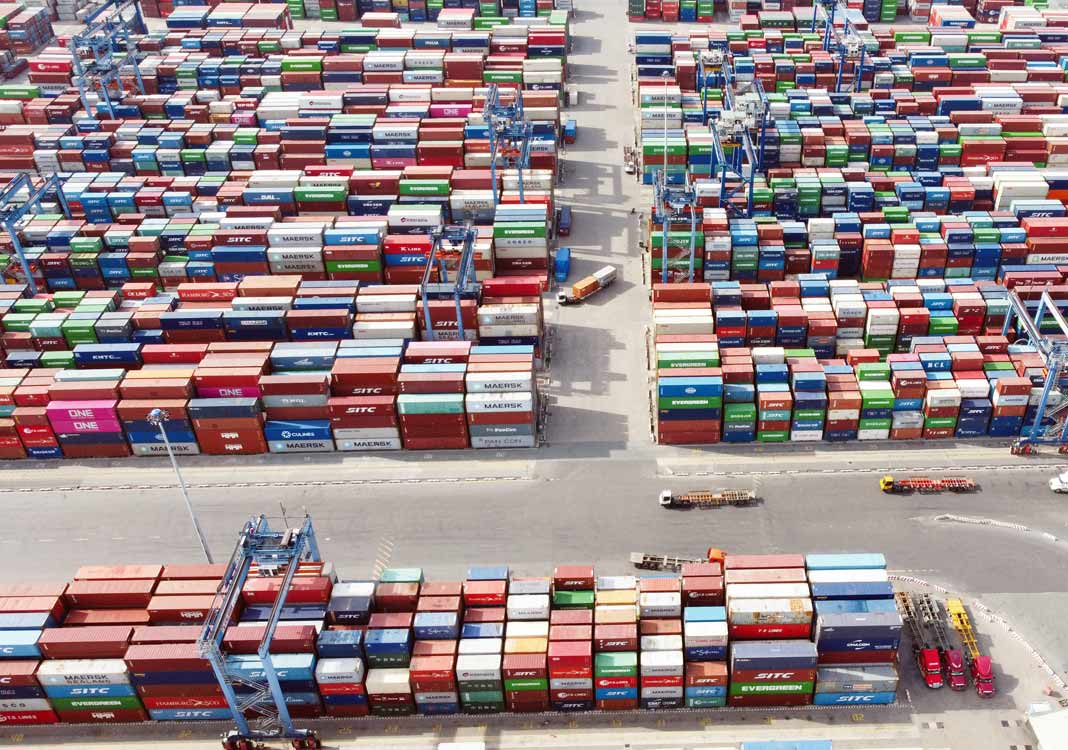Cat Lai Port in HCMC, one of the biggest container ports in Vietnam, has come under great pressure because of massive volumes of cargoes piled up at the port. There needs to be a review of all of this and a careful reconsideration of the relevant planning, some have opined.
Arguably, the congestion at Cat Lai has been particularly serious for five years now and the throughput via the port has constantly risen. It has already exceeded the capacity planned for the port by 2030. However, special care should be taken toward this argument.
Incomprehensive views
First, the problem of port congestion should be taken into account. By the end of July, there had been no concerns over congestions in seaport operations following the incident in mid-2018 related to imported scrap. After relevant agencies—such as the Ministry of Natural Resources and Environment, the General Department of Customs, and the Ministry of Transport—cooperated with seaport authorities in handling the situation, operations have become smooth. Even in the previous three attacks of Covid-19 in Vietnam, activities of the seaports were little affected.
In fact, congestions did happen at HCMC’s seaport system in recent years. However, they involved mostly overland traffic jams on the ports’ access roads for various reasons like traffic accidents at the bottlenecks or the peak shipping season. Although the congestions might have affected seaports and the related enterprises, say, late goods sending and delivery as well as higher logistics costs, they are not the cause of stagnation in port operations. In other words, that is a problem of traffic congestion, not port congestion.
It is this reason that the HCMC government has concluded the city’s transport infrastructure fails to keep up with the growth of the cargo volume through local ports and has mapped out a plan to pour heavy investment to traffic infrastructure and facilities in the near future via the collection of seaport infrastructure fees.
Next comes port capacity. The proponents of the argument that Cat Lai Port has exceeded its capacity point to the planned capacity for this port area: 4.01-4.02 million TEUs by 2020 and 4.02-4.03 million TEUs by 2030 (Decision 3655/QD-BGTVT signed by the Minister of Transport on December 27, 2017 approving the detailed planning of the group of seaports in the southeastern region). The throughput reached more than 5.58 million TEUs in 2020, and thus far exceeding its operational capacity, they argued.
This point of view is inappropriate considering what actually happens in this port area and is in conflict with the HCMC’s government’s viewpoint. It is also at odds with the Ministry of Transport’s planning.
The planning according to Decision 3655 only allows the facilities at Cat Lai Port to receive ships with a tonnage of up to 30,000 tons. However, the Vietnam Maritime Administration (under the Ministry of Transport) has granted permits for vessels with a tonnage of one and a half times greater (45,000 tons) to enter and exit this area. This suggests the capacity of Cat Lai is no longer at the level planned for the handling of smaller ships. Furthermore, the new draft of Vietnam’s seaport planning has stated that ships that may make a call at the port may be up to 45,000 tons each.
Moreover, the total of approximately four million TEUs proves too modest versus the actual operational capacity of Cat Lai Port. The formula commonly used to calculate the capacity of a container terminal is one Panamax crane, three deck cranes and six tractors capable of handling 200,000 TEUs per year. At present, there are 26 Panamax cranes, 89 deck cranes and 255 tractors at Cat Lai. The port’s annual capacity may thus total 5.2 million TEUs at the minimum. According to Saigon Newport Corporation, the maximum capacity of Cat Lai is 5.5 million TEUs per year, whereas in dossier No. 4602/TTr-UBND dated December 3, 2020 on the issuance of seaport infrastructure fee, the HCMC People’s Committee noted that the capacity of this port is 5.3 million TEUs, which may expand to 6.5 million TEUs if all the access roads are developed in accordance with planning.
As a result, although in 2020, Cat Lai Port exceeded the capacity designed for it in 2017, this capacity estimated by the Ministry of Transport is outdated to a certain extent.

The role of Cat Lai Port
As per the Ministry of Transport’s scheme, in the port area of Cat Lai (or more exactly, the port area by the Dong Nai River in HCMC’s seaport system), there are three container terminals, namely Tan Cang-Cat Lai, Ben Nghe-Phu Huu and SP-ITC—the last of which is for international shipping. Notably, in the list of the world’s largest container ports, those in HCMC collectively rank 21st with a total throughput of 7.2 million TEUs. As the 20 ports with a higher rank are all deep-water, those of HCMC are unofficially the biggest non-deep-water port in the world. The city’s seaports even rank above deep-water and transshipment ports as sizable as Colombo (Sri Lanka), Piraeus (Greece), or Dalian (China).
This informal title is not necessarily something to be proud of, but it makes it obvious that, although it is not a deep-water port by nature, HCMC’s seaport system functions efficiently as Vietnam’s import-export gateway, with Cat Lai Port leading the way.
The port area of Cat Lai is currently the first choice for shipping lines, import-export companies, and freight forwarders. It is true that the formation of the Cai Mep-Thi Vai port complex will trigger a shift of cargo away from the HCMC-based ports. Yet this has not happened, as Cai Mep-Thi Vai now mainly takes care of the goods bound for the U.S. and Europe. The reason is, while the previous versions of Vietnam’s seaport planning tend to keep all the ports apart which creates fragmentation and unhealthy competition, Cat Lai is a highly concentrated port area, under the same management of Saigon Port Area 1 Customs Branch in terms of customs. What’s more, despite the presence of many port rivals, only two main operators are effective in the entire region, Saigon Newport Corporation and International Transportation and Trading Joint Stock Company (ITC) .
Considering the characteristics of the shipping industry, certain ports should be placed adjacent to one another to make favorable the exchange of containers between them and to optimize their operational capacity. Meanwhile, shipping lines are able to minimize risks. All these points have benefited in one way or another businesses when they carry containers to and from Cat Lai Port.
It is customary that the world’s container shipping industry is undergoing a consolidation and cooperation process. In the port industry in particular, there have been similar moves, for instance the top four port operators—Hongkong International Terminals (HIT), Cosco-HIT, Asia Container Terminals and Modern Terminals—formed an alliance to jointly manage and operate eight ports including 23 terminals in Hong Kong. Another example relates to Cosco Shipping Ports, Tianjin Port Holdings and China Merchants which reached an agreement on the merger of their terminals in Tianjin to optimize the common resources of all three parties. In Vietnam, Cat Lai should be a case of successful development, rather than being labeled as breaching the planning.
Vietnam’s seaport development planning carried out in previous years is plagued with shortcomings. Therefore, such inadequacies should not be the ground for misjudging a case in line with market demand which achieves success.
By Trung Tuan











